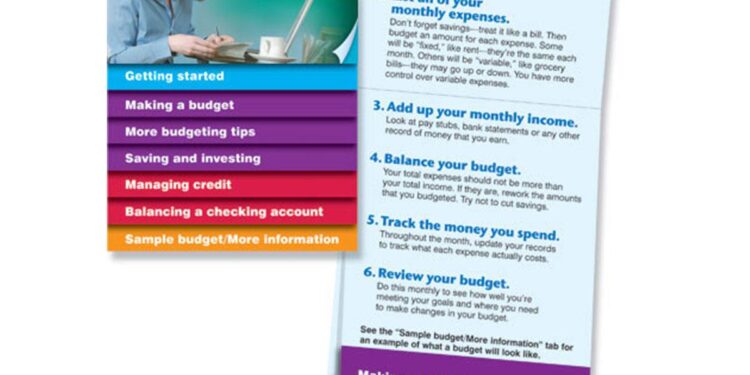in the face of escalating humanitarian needs in Mali, the United Nations Office for the Coordination of Humanitarian Affairs (OCHA) has announced the launch of the 2025 Humanitarian Response Plan, which aims to mobilize $771.3 million to provide critical support to the contry’s most vulnerable populations. With an estimated 4.7 million people in urgent need of life-saving assistance, the plan seeks to address the multifaceted crises exacerbated by conflict, displacement, and environmental challenges. As Mali continues to grapple with instability, this complete approach focuses on delivering essential services, protection, and assistance to those who need it most, highlighting the imperative for global solidarity and action in one of the most pressing humanitarian landscapes of our time. This report delves into the specifics of the response plan and its vital role in safeguarding human dignity and resilience in Mali.
Humanitarian Crisis in Mali: Understanding the 2025 Response PlanS Scope and Urgency
The humanitarian crisis in Mali continues to escalate, driven by a combination of conflict, displacement, and climate-related shocks. As the country grapples with these challenges, the 2025 humanitarian Response Plan has been launched to address the urgent needs of millions affected by this crisis.With a staggering $771.3 million required, the plan aims to deliver life-saving assistance and protection services to 4.7 million people who are in dire need. This includes access to essential resources such as food, clean water, healthcare, and shelter, ensuring that vulnerable populations—including women and children—receive adequate support during these tumultuous times.
Key components of the response plan emphasize the importance of collective action and partnerships between various stakeholders, including local organizations and international agencies. The objectives focus on the following areas:
- Food Security & Nutrition: Immediate food assistance and nutritional support for malnourished children and pregnant women.
- Health Services: Provision of essential health services,including immunizations and maternal care.
- Protection Measures: Psychological support and protection for survivors of violence, especially women and children.
- Water, Sanitation, & Hygiene (WASH): access to safe drinking water and sanitation facilities to reduce waterborne diseases.
This structured approach is vital, as the need for sustained humanitarian assistance persists amid ongoing conflicts and socio-economic deterioration. Each contribution plays a crucial role in alleviating the suffering of those impacted, with a clear mandate to save lives and restore dignity across Mali.
Critical Needs Assessment: Targeting Assistance for 4.7 Million vulnerable Individuals
The recent Critical Needs Assessment in Mali has revealed alarming statistics that underscore the urgent need for humanitarian action. With 4.7 million individuals facing various forms of vulnerabilities, targeted assistance is crucial for addressing the most pressing needs. The assessment categorized the population into specific groups, each requiring tailored support to ensure their survival and dignity. Among these groups, the most affected include:
- Internally Displaced Persons (IDPs): Individuals forced to flee their homes due to conflict and violence.
- Women and Children: Frequently enough the most vulnerable, requiring protection from gender-based violence and access to health services.
- Food-Insecure Families: Households experiencing severe food shortages due to economic instability and ongoing conflict.
The funding allocated through the 2025 Humanitarian response Plan will focus on several key sectors critical for recovery and stability. These include healthcare, where access must be improved to combat disease outbreaks; nutrition, aimed at supporting malnourished children and lactating mothers; and shelter, to provide safe living conditions for IDPs. The plan calls for a multi-faceted approach involving local communities and international organizations to effectively deliver aid.
| Assistance Areas | Projected Beneficiaries |
|---|---|
| Healthcare | 2.3 million |
| Nutrition | 1.5 million |
| Protection Services | 800,000 |
| Shelter and Support | 700,000 |
Mobilizing Resource Support: Strategies for Effective Fundraising and Implementation
The 2025 Humanitarian response Plan for Mali calls for a notable financial commitment of $771.3 million aimed at delivering critical assistance and protection to approximately 4.7 million individuals facing dire conditions. To effectively mobilize the necessary resources and ensure the accomplished implementation of these initiatives, several strategies must be considered. Key approaches include:
- Building Partnerships: Collaborating with local organizations, international NGOs, and governmental agencies to align efforts and pool resources.
- Leveraging Technology: Utilizing digital platforms for fundraising campaigns and outreach to broaden support bases and engage a global audience.
- Community Engagement: Actively involving local communities in fundraising efforts, which not only enhances trust but also encourages grassroots contributions.
In addition, effective communication of the humanitarian needs and specific goals outlined in the response plan is crucial for appealing to potential donors. Transparency about the allocation of funds and the impact of contributions can enhance donor confidence. A well-structured presentation of funding needs, as demonstrated in the table below, can further elucidate the critical areas requiring attention:
| Sector | Funding Needed ($ million) | Target Population (millions) |
|---|---|---|
| Food Security | 250 | 2.5 |
| Health Services | 150 | 1.2 |
| Water and Sanitation | 100 | 1.0 |
| Protection Services | 120 | 1.0 |
| Education | 60 | 0.8 |
the Conclusion
the launch of the 2025 humanitarian Response Plan for Mali underscores the critical need for sustained international support as the nation grapples with escalating humanitarian challenges. With a staggering $771.3 million required to deliver life-saving assistance and protection services to 4.7 million people, the urgency of the situation cannot be overstated. As conflicts intensify and the effects of climate change become increasingly severe,the coordinated efforts of humanitarian organizations,governments,and donors will be pivotal in addressing the pressing needs of the Malian population. The commitment to mobilize resources and support initiatives that prioritize health, food security, and shelter is essential to stabilize the region and promote long-term resilience. As we reflect on the gravity of this humanitarian crisis,it is imperative that the global community responds not only with financial aid but also with a collective commitment to uphold the dignity and rights of those affected by this profound crisis.










